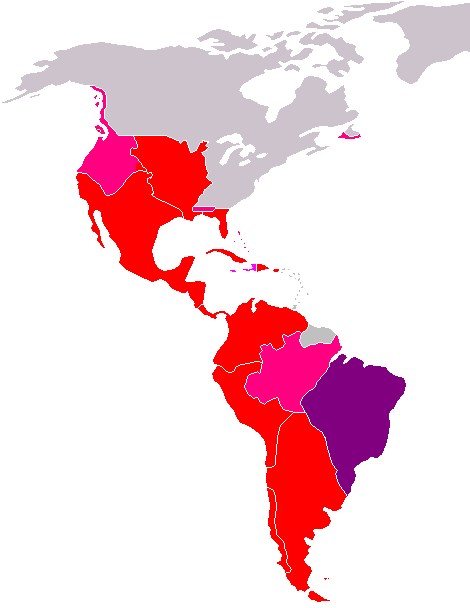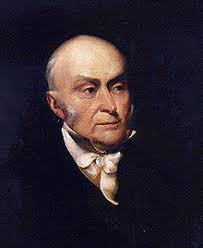This articel has been adapted from our classroom textbook, GEOGRAPHY ALIVE! Regions and People by Diane Hart.
We have learned that the Andes Mountains of South America are divided into four different altitudinal zones, which are shown in the diagram below:

Life in each zone is very different. Whether you are looking at human life, or plant life, or even how the air is different. The zones are all unique. Each article below highlights one of the four zones, providing details on physical characteristics, human adaptations, and overall, the unique differences between each zone.
TIERRA CALIENTE: "Hot Country"
Imagine you are a worker picking bananas on a plantation in Ecuador. The temperature is very high, so you must stop very frequently to wipe the sweat from your brow. You also must watch out for spiders, because tarantulas often hide within the banana stalks. A tarantula bite may not be deadly, but it is EXTREMELY painful.
_04_ies.jpg)

This banana plantation is located in the tierra caliente. Consisting mostly of the tropical lowlands, its elevation zone lies at the bottom of the Andes Mountains on both the eastern and western sides. People who live in tierra caliente must adapt to a hot year-round climate.
PHYSICAL CHARACTERISTICS: The tierra caliente is the lowest of the four elevation zones in the Andes Mountains, extending from sea level to about 3,000 feet. The climate of this zone is generally hot and humid, with the average temperature ranging around 75 to 80 degrees.
Broadleaf evergreen forests cover the eastern slopes of the Andes Mountains heading into the Amazon River basin. On the western side of the Andes, the natural vegetation ranges from lush rainforests to tropical grasslands.
HUMAN ADAPTATIONS: The tropical heat of the tierra caliente can make it a very difficult place to live. As a result, the area is less populated than cooler, higher elevation zones. Some inhabitants are descended from the Africans who were brought by the Spanish to labor on large plantations as slaves. Indigenous peoples also live in some parts of the tropical rainforest.
People in this elevation zone have adapted to life within the tropics. Farmers plant crops that can do well in the heat, with some of the most common crops being bananas, rice, and sugarcane. People dress in light clothing, and they live in houses that are open to the cooling breezes. Their houses are often made of bamboo or wood, with palm-thatch roofs. Some homes are raised on stilts to provide protection against flooding.
TIERRA TEMPLADA: "Cool Country"
In the rolling hills of Ecuador's tierra templada, gardeners raise flowers, tending to long rows of carnations, daisies and roses. The flowers they grow will eventually be shipped to buyers thousands of miles away. In fact, many of the roses enjoyed by Americans on Valentine's Day come from Ecuador because the mild weather of Ecuador provides the perfect climate for cultivating and growing flowers.

PHYSICAL CHARACTERISTICS: The tierra templada is the second elevation zones of the Andes Mountains. It lies between 3,000 and 6,000 feet above sea level. At these elevations, the climate is temperate, with temperatures at around 65 to 75 degrees. There is rarely any frost. This pleasant weather lasts throughout the year, which is why people often call the tierra templada "The Land of Eternal Spring."

Vegetation changes with the elevation in this zone. At the lower elevations, tropical plants such as bamboo, palms, and jungle vines are quite common. At the higher elevations, broadleaf evergreen forests are typical.
HUMAN ADAPTATIONS: The mild climate in the tierra templada makes it a great place to live. Because of this, the tierra templada zone is more populated than the tierra caliente. Many of the people who live here are called MESTIZOS- which are a mixture of indigenous and European peoples. Europeans influences are common in the tierra templada.
Farmers in this zone choose their crops based on elevation. At lower levels, they grow heat-loving crops like bananas and oranges. The main crop of this zone is coffee, because the conditions of the tierra templada make it excellent for growing high-quality coffee beans. Most coffee beans are grown on small farms or plantations.
People who live in the tierra templada adapt their housing and their clothing to the comfortable climate. They live in solid homes made of concrete brick and are covered with tiled roofs. More wealthy residents may live in large homes called HACIENDAS.
TIERRA FRIA: "Cold Country"
A woman rises early in the highland city of Cuzco, Peru. This is tierra fria, and the morning air is very cold. The woman puts on a warm sweater and shawl and heads off to the market to buy food, walking down ancient stone streets that were built by her ancestors, the Incas. A light frost ont he stones makes them slippery, so she is careful. She is used to living life this way in the highlands.

PHYSICAL CHARACTERISTICS: Tierra fria covers most of the Central Andes Mountains, with an elevation of about 6,000 to 12,000 feet above sea level. Average temperatures here vary from about 55 degrees to 65 degrees. Nights are always colder. The temperatures can often reach below freezing at higher elevations.
Mountains and valleys are the main characteristics of the tierra fria zone. The mountains are steep and rugged, but plateaus are also very common.
A high plateau called the Altiplano lies at an average elevation of 11,000 feet between Peru and Bolivia. This Plateau contains Lake Titicaca, one of the world's highest navigable lakes. This is lake that is large and deep enough for bigger boats.
Elevation also affects what can grow where: the tree line in this zone lies between 10,000 and 12,000 feet. The tree line is important because it marks the highest elevation at which trees will grow.
HUMAN ADAPTATIONS: Half of the population that lives here are indigenous peoples. The two main groups are the Quechua and the Aymara. Both of these groups were once a main part of the Incan Empire.

Over the centuries, native peoples have adapted to life at higher elevations. They wear warm woolen clothing to protect themselves from the cold. They also build thick-walled homes out of ADOBE brick. Their bodies have even adapted to high elevations, as they develop larger lungs that can draw more oxygen from the thin mountain air.
Farmers grow crops that do well at high elevations, including potatoes, wheat, barley, corn, apples and pears.
Another common practice within the Andes Mountains is vertical trade, which is the trading of farm products between higher and lower elevations. Since not all crops can be grown in both, this helps the different elevation zones receive necessary items that grow within the different zones. Through veritcal trade, people who live in one elevation zone have access to foods grown in other elevation zones.
TIERRA HELADA: "Frost Country"
Every year, Quechua Indians hike to a shrine in the mountains that is high above the city of Cuzco. They travel there to worship the APUS, which are "mountain gods." "We make offerings to the mountains," says one pilgrim, "asking them to send water for our crops and livestock."
The shrine above Cuzco is in the tierra helada, the highest elevation zone of the Andes Mountains. The pilgrims who make this journey have to be careful to walk slowly because the air is very thin. If people move too quickly at this high elevation, they may experience altitude sickness from a lack of oxygen. Altitude sickness can cause headaches, fatigue, shortness of breath, and nausea.
PHYSICAL CHARACTERISTICS: The tierra helada lies between 12,000 and 15,000 feet. Average temperatures vary between 20 degrees and 55 degrees. The tierra helada region is a very extreme environment. Climate is very cold and windy, it often freezes at night, and snow falls at higher elevations regularly. At the upper edge of this zone is the snow line, which is the elevation where permanent snow and ice begin. Above the snow line, snow remains on the ground year round.
HUMAN ADAPTATIONS: It is very challenging to live in the tierra helada region. This is why very few people live at these extreme elevations. Most of the people who live here are indigenous people, like the Quechua and Aymara. People have adapted to life in the tierra helada through various ways. Like in the tierra fria, they dress in warm clothing mostly year round. They plant the few crops that will grow at high elevations, which include a native grain called QUINOA and certain types of potatoes. They also reaise llamas and alpacas, two types of animals related to the camel. Llamas and alpacas produce thick wool for blankets, bags, and clothing. Llamas also make good pack animals for transporting heavly loads across the mountains.

Some people who live in this elevation zone work in mines because the high Andes have several large mineral deposits like lead, copper and silver. Working conditions in the mine are quite dangerous, but it does provide one of the few sources of income for residents of the tierra helada.
People generally do not live above the snow line, but it is an important area because of glaciers. Glaciers are large ice fields that store large amounts of fresh water. in the summer, water melts from the glaciers and eventually flows down to the people living at lower elevations. Streams that are fed by these glaciers form a crucial part of the water supply.
CONCLUSION:
The four zones are quite different and unique due to elevation, and depending on personal preference, each zone can and does provide a way of life for individuals seeking opportunity in the Andes Mountains. As time goes on and human adaptations continue, we may expect to see many changes taking place within this region of South America, as humans continually learn to adapt to this way of life and this territory of the earth.









